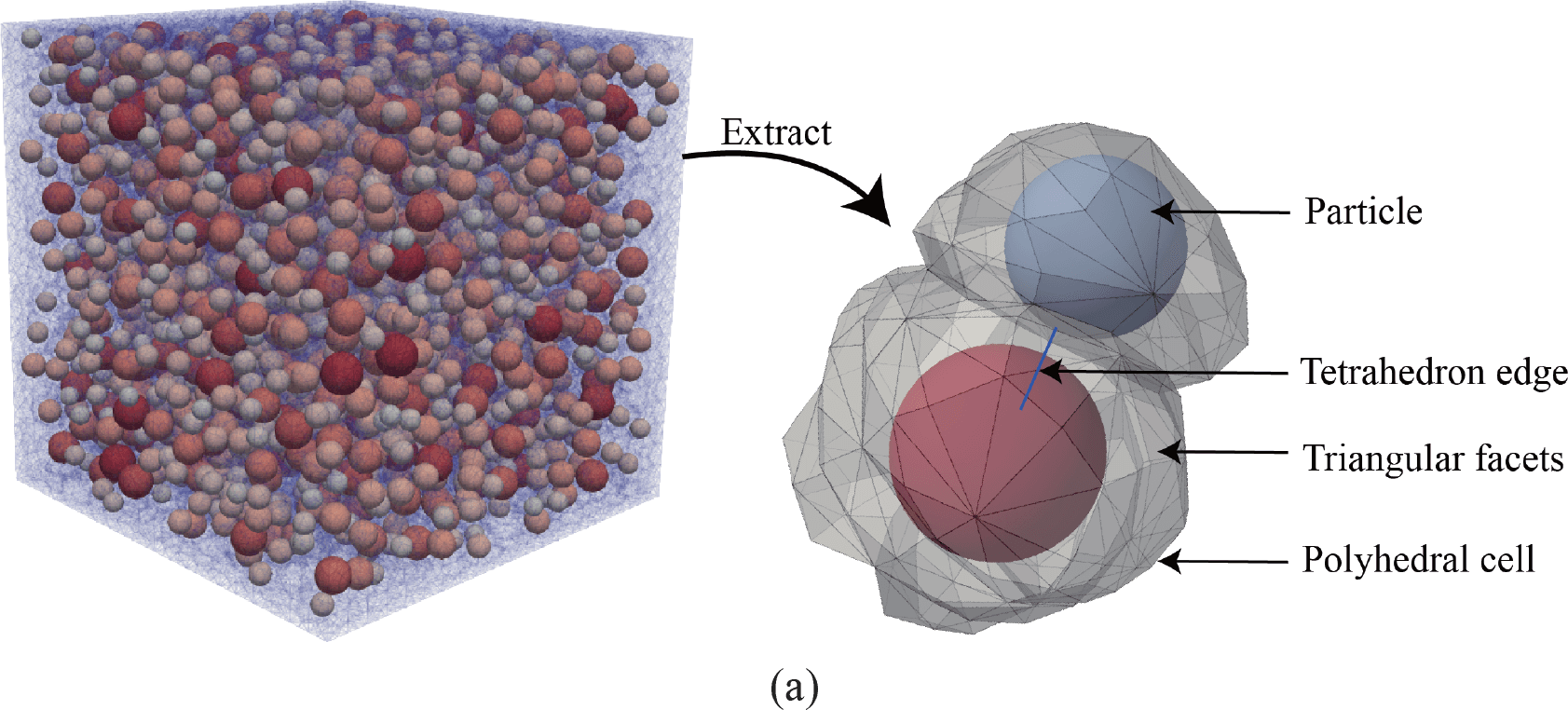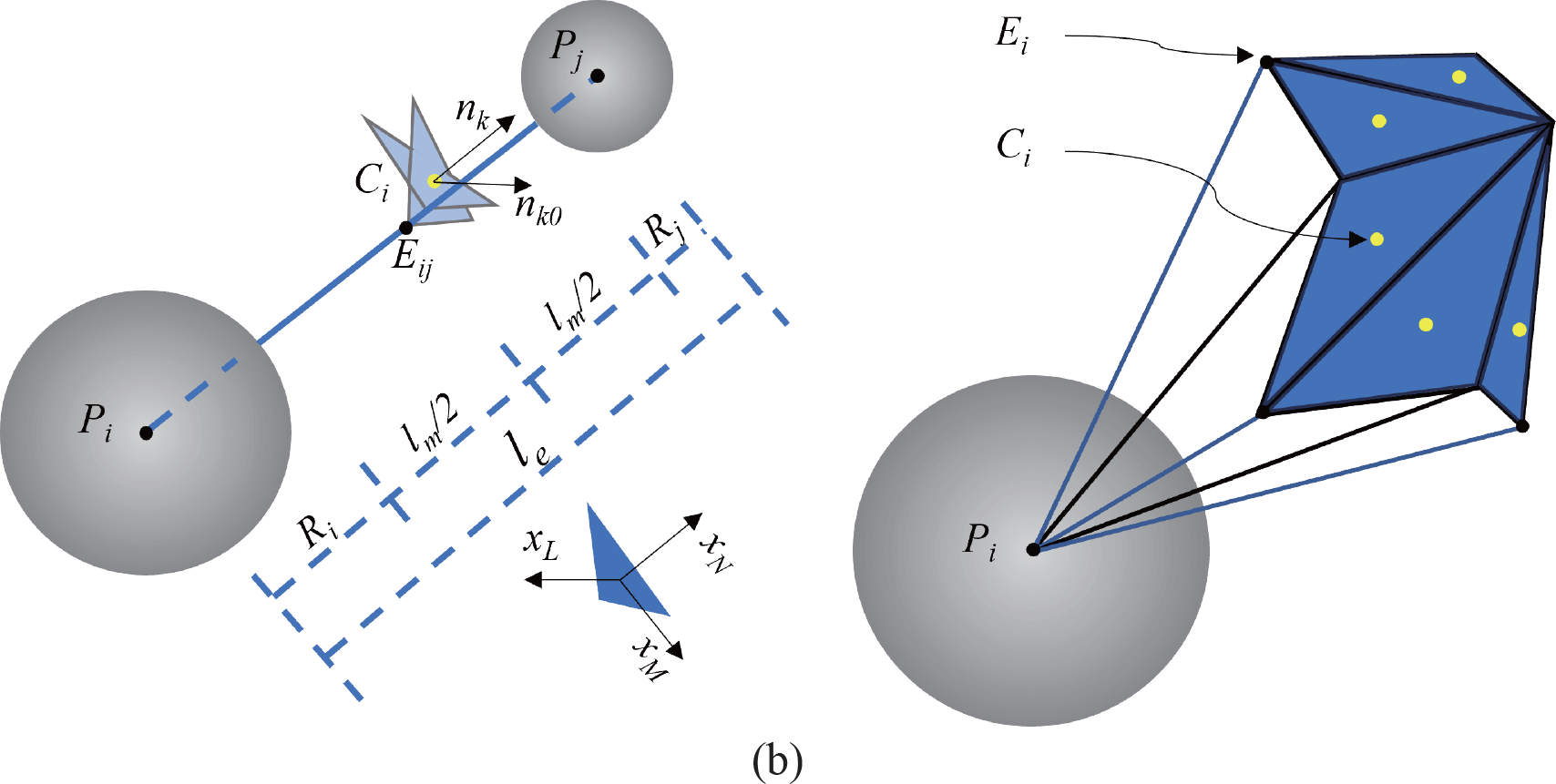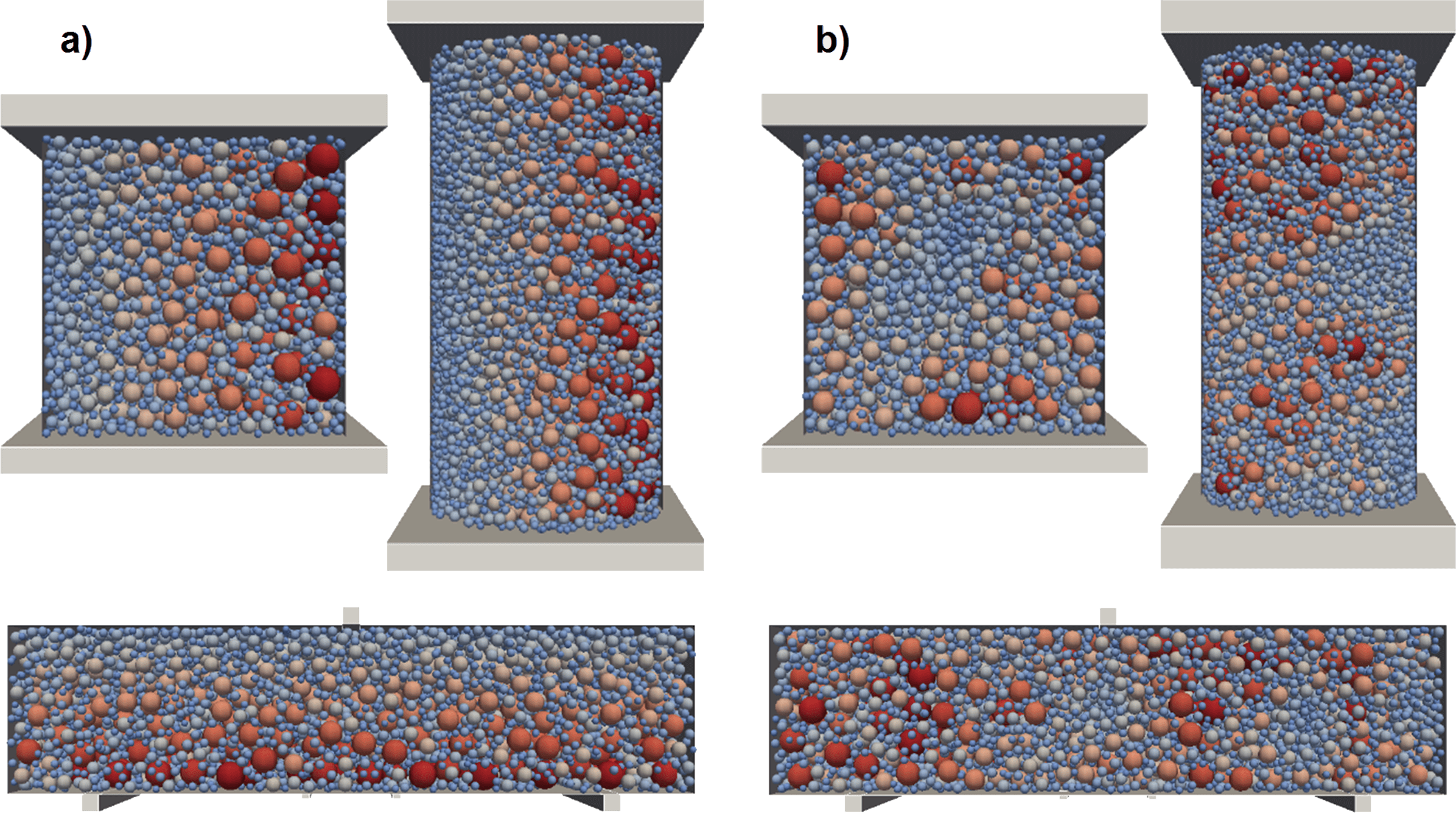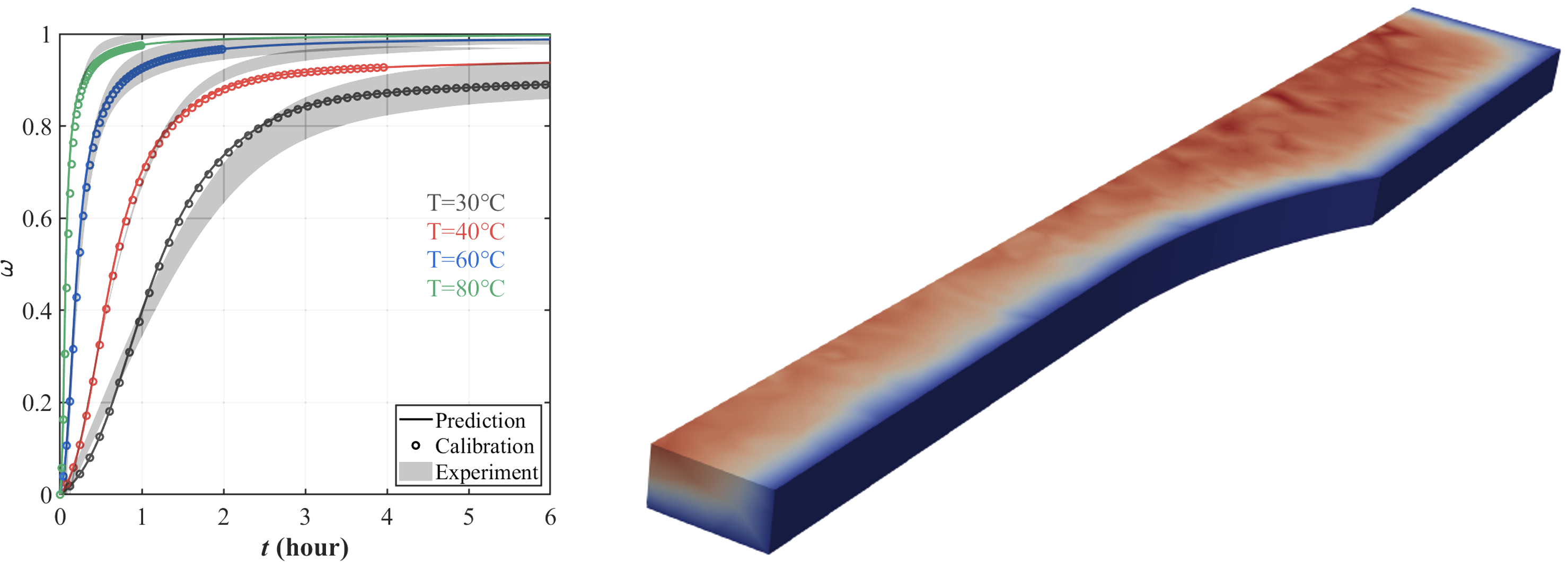Civil Engineering
The Multiphysics Analyses of the Response of Structures (MARS) framework has been developed since the year 2000 to address the needs of practicing engineers as well as researchers in the field of structural engineering.
Many of the most significant construction materials (concrete, timber, polymers) are heterogenous at the relevant length scale, undergo aging processes resulting in micro-structural changes and are subject to pronounced time-dependent chemo-hygro-thermal processes.
MARS facilitates a variety of analytical problems such as but not limited to micro-structural analysis and fresh state printing.
One of the biggest assets of MARS is its implementation of the Lattice Discrete Particle Model (LDPM) which has been refined over the last two decades and provides realistic predictions of the behavior of concrete under a range of loading conditions.
Lattice Discrete Particle Model (LDPM)
LDPM is a novel analytical approach for modeling the response of heterogeneous and granular materials, such as composite laminates, ceramics, concrete, gravels, and soils. The premise of the LDPM formulation is that most materials are not homogenous when considered at a sufficiently small dimensional scale (micro- and meso-scale). This heterogeneous character has a paramount relevance for the description of strain localization, crack initiation, and crack propagation, which, in turn, strongly influences the ultimate failure mode of a structural system. Continuum-based models, which homogenize material behavior, are inherently incapable of capturing the mesoscale interactions and as such become complex and inadequate in the failure range.
Response of Concrete
The most robust and computationally efficient implementation of the LDPM offers unparalleled predictions of the response of concrete subject to a number of loading situations including
- Unconfined compression with low and high friction along the loading platen
- Biaxial compression
- Hydrostatic compression and triaxial stress states
- Bending
- Torsion
Unlike classical continuum-based models, LDPM provides realistic crack distributions and predictions of crack openings which take into account the actual size distribution of coarse aggregates. Furthermore, this feature makes it possible for computational simulations to predict experimentally observed scatter. This is accomplished computationally with MARS by running simulations on virtual samples with different particle configurations.
Fiber-reinforced Concrete
In addition to reproducing the placement and distribution of coarse aggregate pieces, MARS also supports simulations with discretely placed fibers. The transition from post-peak softening to strain hardening can be predicted by varying the volume fraction of discretely placed fibers. Furthermore, directional effects that emerge during casting (preferential 1D direction in beams due to the flow of concrete, preferential in-plane orientation of fibers in shotcrete) can be virtually reproduced in order to study consequences on effective macroscopic response and in turn structural response.
Spatial Variability
The optimal design and manufacturing of additively manufactured (composite, 3DPC) structures requires extensive parameter explorations to identify tradeoffs between manufacturability and performance, along with correcting possible issues before production. Traditionally, this process requires extensive physical trial and error resulting in slow product development, large costs, and a significant increase in the time from conception to qualification. MARS enables the Digital Engineering (DE) of the build process. Using digital data instead of experiments allows for the identification of possible problems early in the project when costs for corrective measures can be hundreds of times lower than after production has started. At the same time, digital manufacturing allows one to explore various combinations of manufacturing parameters that lead to optimal quality and repeatability in a short amount of time.
Curing Reactions
Concrete is an aging material. Its properties change over time due to progressing hydration. A number of practically relevant structural problems require a realistic prediction of energy released during curing, including temperature rise and related thermal expansion.
MARS offers curing simulations considering cement hydration and silica fume polymerization. These simulations can be carried out using different discretization schemes, namely FEM or a dual lattice mesh.
The mechanical performance of a thermosetting polymer (e.g. used for post-installed adhesive anchors or FRP strengthening) also depend on an exothermal curing reaction which is also dependent on ambient conditions. It is, thus, relevant to predict the curing reaction in order to be able to predict the time until a sufficiently high curing degree is reached and the anchor can be loaded safely.
Hydration-degree Dependent Response: Drying and Autogenous Shrinkage
Realistic predictions of cracking risk at an early age in mass concrete structures or in restrained concrete elements such as walls requires the use of spatially variable mechanical properties which are functions of the local hydration degree. Several research papers have been published showing that MARS enables excellent predictions of drying shrinkage and autogenous shrinkage driven by a coupled multi-physics analysis. The results not only agree in terms of global deformation history but especially regarding the predicted crack patterns which are impossible to obtain with standard finite element approaches.






